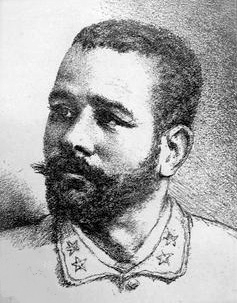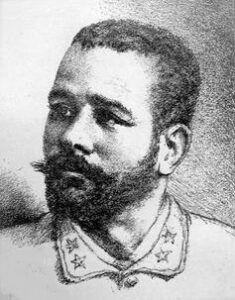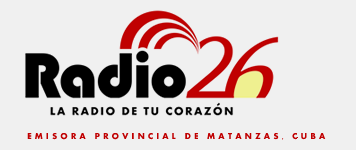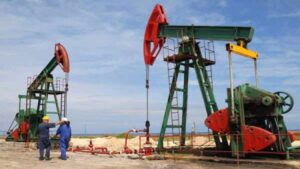Memories of a titan.

 The Bronze Titan of Cuba, Antonio Maceo y Grajales, is one of the most representative figures in the history of the largest of the Antilles, venerated by many for the intransigence and military skill that characterized him in life and for the integrity with which he assumed the reins of the independence of Cuba.
The Bronze Titan of Cuba, Antonio Maceo y Grajales, is one of the most representative figures in the history of the largest of the Antilles, venerated by many for the intransigence and military skill that characterized him in life and for the integrity with which he assumed the reins of the independence of Cuba.
José Antonio de la Caridad Maceo y Grajales was born on June 14th, 1845 in the former Providencia Street No. 16, today Los Maceo Street No. 207, in Santiago de Cuba. 207, in Santiago de Cuba and although many historians and biographers present him in his beginnings as a restless, undisciplined, irate adolescent and eventually inclined towards gambling and quarrels, it is a fact that thanks to his constant self-improvement, Maceo managed to overcome stuttering and difficulties in pronouncing the letter «C» and overcome the vices and defects of ignorance, until he obtained an enormous academic, ethical and moral preparation and became the most brilliant of the Cuban chiefs.
Since his incorporation to the Ten Years’ War, the growing military career of the Bronze Titan began to become palpable. In this period, in addition to starring in countless combative feats, he evidenced his leadership capacity in command of the forces of the invading contingent from Villarreal, his political maturity in the face of the military seditions in Lagunas de Varona and Santa Rita, as well as his rejection of the Zanjón Pact of February 10th, 1878 and the protest that on March 15th he led in Baraguá in response to this call for peace without independence of the Spaniard Arsenio Martínez Campos.
During the so-called Tregua Fecunda, in spite of constant persecutions and assassination attempts, smear campaigns and his stay in exile, he visited different Latin American countries such as Honduras, where he was entrusted with high positions in the army such as chief of the garrison of Tegucigalpa, as well as those of division general, granted to him by the then president Marco Aurelio Soto, alternate judge of the Superior War Tribunal and commander of Puerto Cortés and Omoa.
Not only was he in contact with personalities such as Julio and Manuel Sanguily, José María Rodríguez or Juan Gualberto Gómez or dazzled the Havana intelligentsia with his imposing figure, he bared his chest full of scars before the curious eyes of two journalists with separatist ideas who longed to interview him or made the famous Havana tailor Leonardo Valencienne proud, eager to make him a suit, or rubbed shoulders with the most influential writers and journalists of the time such as Enrique José Varona or Julián del Casal, or attended the first May Day celebration in Cuba, but also the Abakuá religion, although he was not aware of it, guarded and protected his wanderings in Havana and each capital enclave visited by him became the center of massive ovations and displays of respect and admiration for his person.
After the new outbreak materialized on February 24th, 1895, Maceo joined the battle after his landing at Duaba, Baracoa on April 1st of the same year, being received by the enemy, with whom he fought bravely. The news of his arrival in Cuba spread thanks to the international press and naturally, both the enthusiasm and the mobilization were instantaneous.
Arriving on October the 22nd and already as lieutenant general of the Liberator Army, he led the Invasion to the West, qualified as the strongest anti-colonialist military campaign in Latin America.
The forces under his command carried out countless insurrectionary actions that continue to arouse the admiration of the most studious towards the growing military prestige of the Bronze Titan, who with his purest independence ideal reaffirmed that the machete would not be unsheathed until Cuba was independent and free from the odious scourge of slavery.
During the last year of his life, the Titan’s combative feats and vigor did not cease. He was the leader of military actions in Paso Real de San Diego, Candelaria, Güira de Melena, Quivicán, Lomas de Tapia and other places of the national territory.
Settled with his troops in the Montiel and Bobadilla farms, in San Pedro, near Punta Brava, in the afternoon of December 7th, 1896, the Spanish column of the colonel Francisco Cirujeda surprised the mambises and between failed maneuvers, but with the idea of the retreat categorically discarded, Antonio Maceo Grajales wielded his machete for the last time when a bullet destroyed his carotid artery and another one, later impacted in his thorax and put an end to the life of his steed.
Bravery in the manigua, more than remarkable strategic skills, an evident and enviable physical strength and an exemplary discipline characterized the Bronze Titan, who in his more than 600 fights, received a total of 32 significant wounds.
Fifty-one years old was barely the age of the Cuban most mentioned in the press of the western world in the last decade of the 19th century and who, despite the defamatory whim of the Spanish propaganda, did not lose even after his death, an event that shocked both his followers and detractors, the prestige, affection and eternal admiration of his people.
Written by Yadiel Barbón Salgado.



